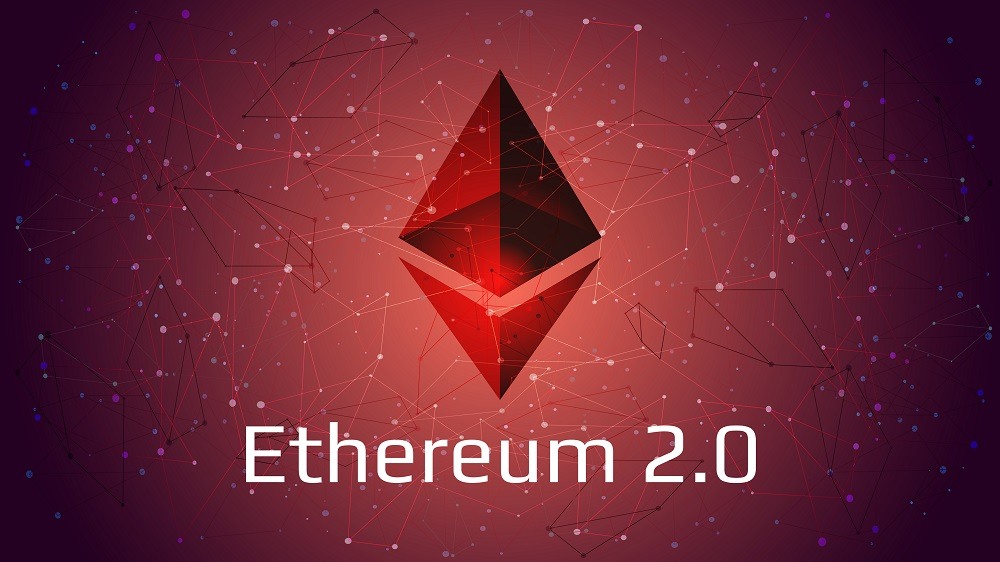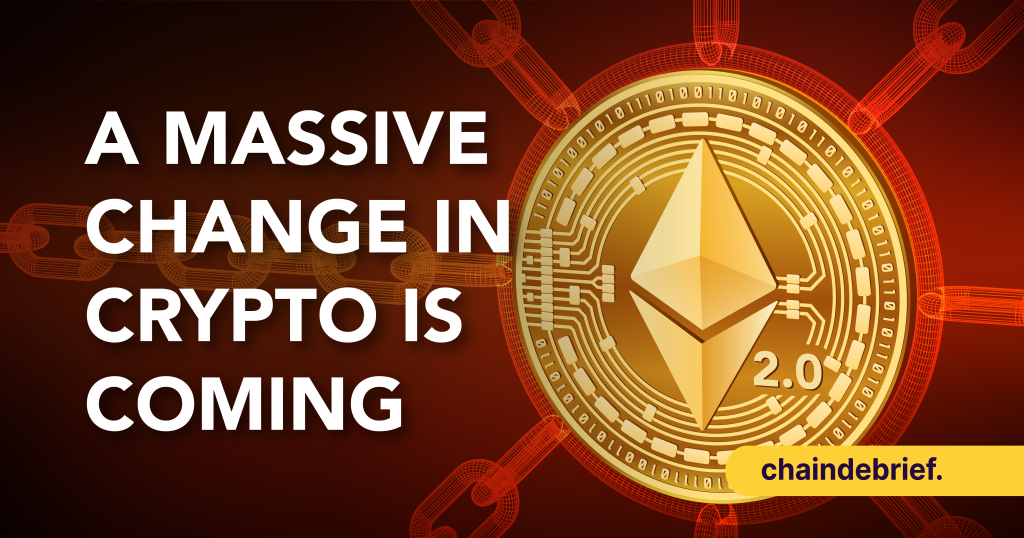
Personally, I’m super bearish at the moment and don’t think the market would recover anytime soon. The macro perspective is not looking too as many are expecting further rate hikes from the feds.
At this rate, many DeFi projects are expected to die off and only the strong would survive this harsh winter. One of the blockchains that has survived the cold winters is none other than the one and only Ethereum blockchain.
I’m bullish on Ethereum not only because it is the most talked-about blockchain but also because of the Ethereum 2.0 upgrade.
What is Ethereum 2.0?

Starting in Q4 of 2019, Ethereum 2.0 was projected to be completed in 2021. But due to multiple setbacks along the way, the latest completion date is projected to be in Q3 or Q4 of 2022.
Ethereum 2.0 is a new version of the Ethereum blockchain that will use a proof of stake consensus mechanism to verify transactions via staking.
The main gist of Ethereum 2.0 is the transition from the energy-intensive Proof-of-work (PoW) system to a more energy-efficient Proof-of-stake (PoS) system. Not only will the transition make it more energy-efficient, but it will also improve scalability and decentralization.
How this will affect miners
Proof of work systems devour a tremendous amount of electricity. Bitcoin mining, for example, currently consumes electricity at an annualized rate of 127 terawatt-hours (TWh). That’s currently higher than the power consumption of the entire country of Norway.
The shift from PoW to PoS consensus mechanism would cut off all the miners needed to secure the network. The fees that were previously given to miners as a reward would be redistributed to Ethereum stakers instead.
Coinbase expects ETH staking yields to rise to 9-12% APR post-merge. pic.twitter.com/ST6VcGjQDG
— Jacob Franek (is Hiring) (@panekkkk) February 23, 2022
Coinbase estimates that staking yield would increase from the current 4.3% APR to upwards of 9-12% APR post-merge.
The merge would also turn Ethereum into a deflationary token. It is simulated that post-merge would see a net deflation of -0.2% every year based on historical performance.
Not forgetting that staking is much more energy-efficient compared to mining, stakers will be less likely to sell Ethereum tokens compared to miners as they do not have to pay for things like utility. This would reduce the overall selling pressure on the market.
The great Ethereum dump?
Many are warning that they will be a great Ethereum dump when the Ethereum 2.0 merge happens but I personally think it will only be a small dip at most (might be famous last words).
At the time of writing, there are over 13 million ETH staked across 388 thousand different validators.

Liquid staking from protocols like Lido Finance makes up 35% of all the Ethereum staked for the Ethereum 2.0 upgrade. The other 65% of staked ETH comes from exchanges, staking pools and individually-ran validators.
We do not have to worry about Ethereum locked by liquid staking because in-principal, the staked Ethereum is already in circulation in another tokenized form like stETH. We only have to worry about the token inflation coming from the other 65% of unlocked ETH.
But the thing about the unlocked Ethereum is that it would not flood the market once the merge is complete. It would take another Ethereum upgrade to be completed before the staked Ethereum can be withdrawn. The upgrade is estimated to take place 6-12 months after the merge.
Furthermore, there is a limit on how many validators can exit per epoch. Experts estimate that it would take as long as a year for all the validators to exit which means that even if all the validators decide to exit, it would only gradually inflate the market.
The Merge is a substantial change in supply / demand forces most people underestimate.
— korpi (@korpi87) June 7, 2022
Multiple $Ms of daily sell pressure on $ETH will be replaced by buy pressure. Every day we will need new sellers to prevent the price from going… up!
Let that sink in.
More details: 🧵👇 pic.twitter.com/f6Nym863gI
Another thing to note is that as the number of staked Ethereum decreases, the staking reward would increase and it would incentive the community to stake their Ethereum instead of dumping it. Find out more on how the merge will cause a substantial change in supply and demand above.
ETH vs BTC
Bitcoin and Ethereum are the two most popular cryptocurrencies, accounting for a combined 59% of global crypto market capitalization.
Ethereum’s price has soared 648% in the past three years, more than double the 250% gains in Bitcoin during the same period.
The merge will make Ethereum a more attractive investment than Bitcoin from an ESG( Environment, social and governance) perspective, it doesn’t necessarily make Ethereum a threat to dethrone Bitcoin as the world’s top crypto.
Chris Kline, chief operating officer and co-founder of Bitcoin IRA, says Bitcoin and Ethereum are more complementary than they are competitive within the crypto market.
“Bitcoin and Ethereum serve different purposes. Bitcoin is a proof-of-work, limited asset, monetary crypto, while Ethereum’s utility is [as] a Web 3.0 backbone. Both serve as critical and distinct elements of the overall digital asset ecosystem underway,” Kline says.
Ethereum is expected to complete a major trial for the merge in June, using the test network Ropsten. Once the Ropsten upgrade is completed, Ethereum developers have just two more test networks to upgrade before the merge of the main Ethereum network.
Closing thoughts
While the market can be unpredictable and irrational at times, I am still very bullish about Ethereum 2.0 upgrade and I can’t wait for the merge to happen this year. Ethereum has the highest activity in the space and the 2.0 upgrade would only boost those numbers.
With NFTs, DeFi, the deployment of smart contracts along with all the layer2s that are building on this project, it is evident Ethereum is in a league of it’s own.
But then again who knows when will the merge will be completed. It has been pushed back multiple times in the past and I’m not surprised it will be postponed again. Even if it takes more time for them to perfect this recipe, I am all in for it to be patient. Patience is key.
[Editor’s Note: This article does not represent financial advice. Please do your own research before investing.]
Featured Image Credit: Chain Debrief
Also Read: Here Are 3 Sample Crypto Portfolios For Those Who Are Just Starting Out



































